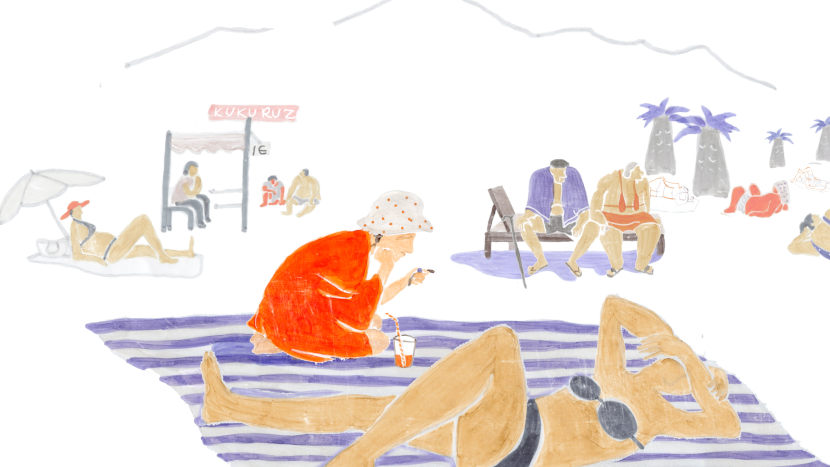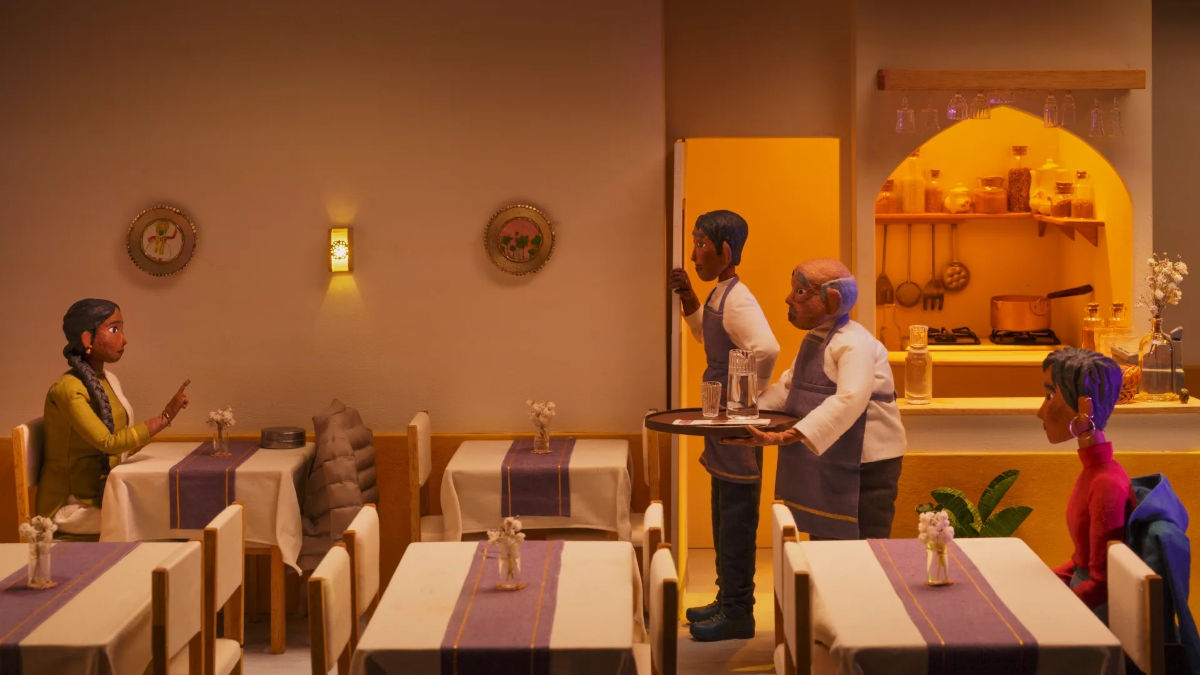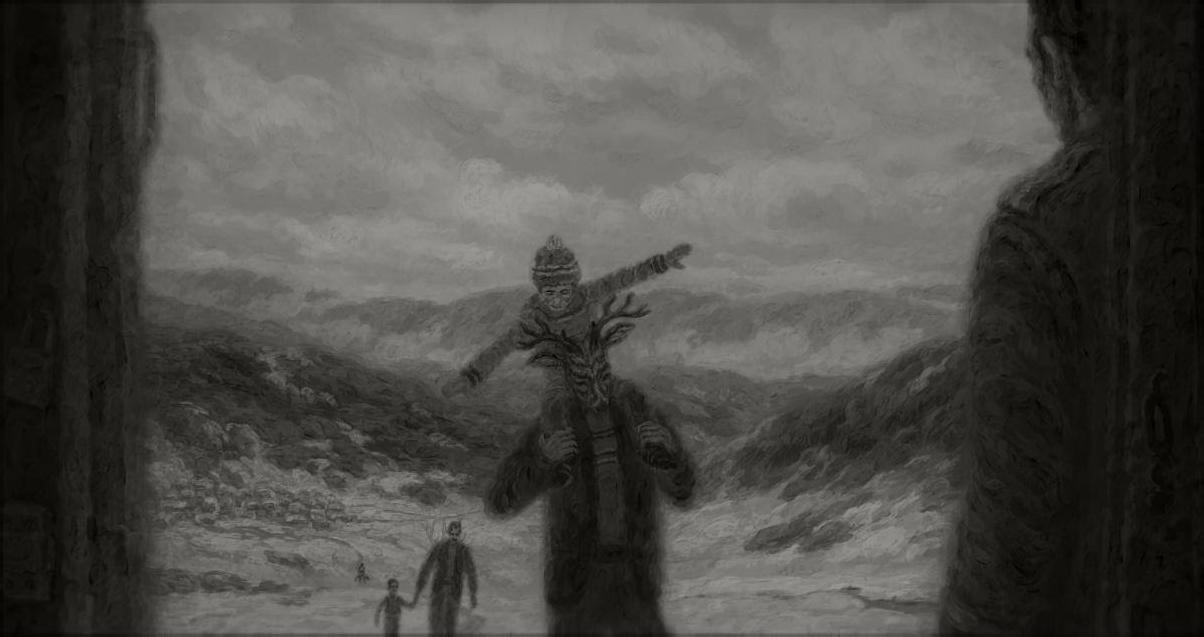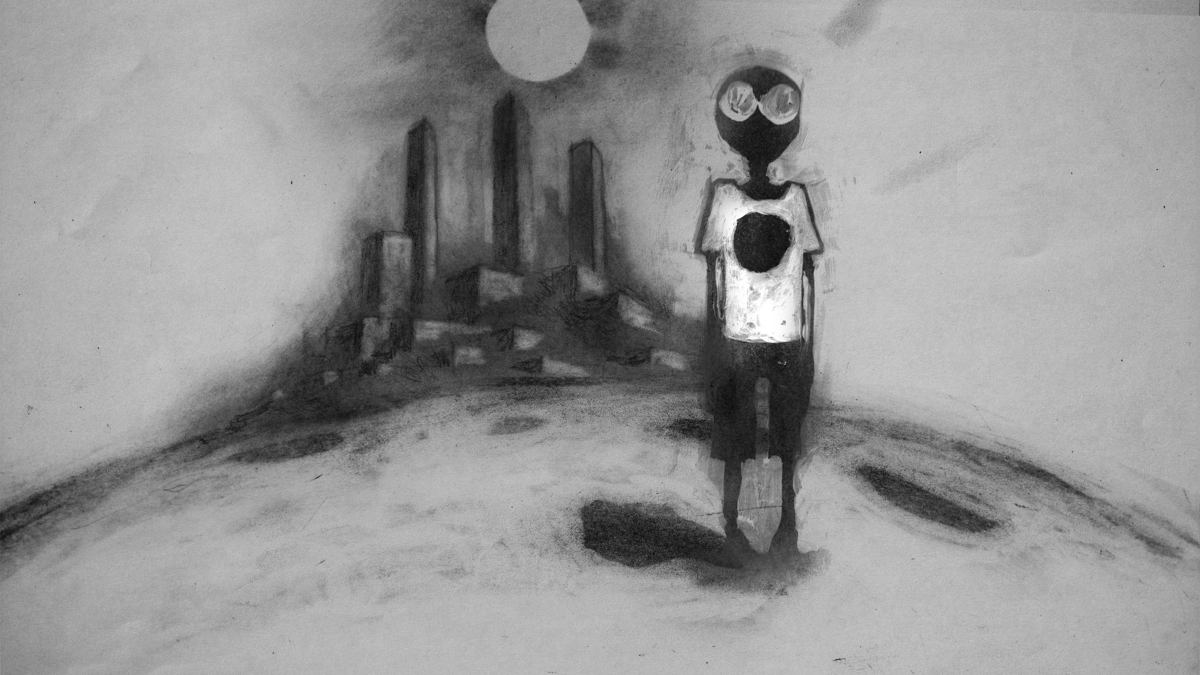Five Minutes To Sea by Natalia Mirzoyan

Armenian animation director Natalia MIrzoyan presents her multi-awarded animation short Five Minutes to Sea.
The film shows a small but memorable moment from childhood, juxtaposed with the theme of old age and the difference in perception of time at the end and the beginning of life - FIlm Synopsis
Watch Five Minutes to Sea
Natalia Mirzoyan talks to Zippy Frames.
ZF: The film looks like a reminiscence of old times, but I was wondering how much of this is personal experience and how much is just ordinary observation coupled with creative imagination.
NM: The film grew out of sketches I made during my vacation in Montenegro. I was thinking about how to connect them into a story, and a friend told me about her memory of her mother not letting her in the water for five minutes to keep her warm. I felt that it has drama I was searching for. But this is not my personal memory. I grew up in Armenia - and it was warm there and there was no sea. Really liked the passing from one visual idea and scene to another, from objects to birds to animals and people.
ZF: Did you actually schedule this in a very strict fashion from the storyboard stage, or did you leave room for this in the animation phase as well? Looks effortless.
NM: didn't have a storyboard. I made an animatic in the beginning, but it is very different from the final movie. I animated and edited everything myself, so I had the opportunity to improvise as I worked. But since I didn't have the opportunity to make a film in one sitting, I changed a lot of things after breaks in work. So I'm happy if you think it looks effortless, because I was really tormented by throwing out and adding scenes.
ZF: Did you plan to have all these characters from the beginning? The boy, the old couple etc.
NM: Many of the characters in the film are taken from sketches, so they are real, but unfortunately not all fit into the concept of slow time, so I had to throw someone out, and someone to create from imagination.

Five Minutes to Sea Animation Example
The boy is a fictional character, as the antipode of the girl. But the Old couple and the scene with watering from a bag is taken from real life. I was very impressed with this scene, when saw it, and It was major reason for starting this film.
ZF: What does the sea mean to you? It's also present in your Chinti film.
NM: For me, in this film the sea is a symbol of infinity. Where we all came from and where we will go in the end. Therefore, the old man in the final merges with the sea, turning into a flock of fish. In Chinti the action takes place near the Taj Mahal, which stands on the river, not on the sea.
ZF: You made Chinti with tea leaves. Any special aesthetic concerns and issues you'd like to highlight for Five Minutes to Sea?
NM: The film is drawn on coated paper with markers with soft brushes. First, a rough animation was made on one side, and then on the back of the paper, I and my two assistants colored the frames. Markers were not the best choice, because they changed color and saturation in the process and quickly ended, and also cost a lot. I wanted to express the ephemerality of sunny and carefree beach, the vibration of the air, and so it seemed to me that the backgrounds are superfluous. Which made the work much easier.
ZF: Can you give a little glimpse of your schedule and the people you worked with? How long did it take you to finish the film, and how easy was to get the creative voices you needed to support it?
NM: I made the film for a long time, about two years. I often had to take breaks from work, and my daughter was only 2 years old at the beginning, and I needed to pay enough attention to her. Studio “Petersburg” helped me get a little financial support from the Russian Ministry of culture, but it was not enough to hire a large team, and I feel more comfortable working alone. I had 2 animators, but I animated most of the scenes by myself. But I had help from my two friends to color the film, it's a huge job and without them I would not have done it. Sound designer and composer is Artem Fadeev. It was my first time working with him, but we understood each other very well. Unfortunately, we live in different cities, so we had to coordinate most of the soundtrack online.
ZF: Many people would call your film a nostalgic one, but I'm not sure this is the case. It has a different relationship with time than simply looking back.
NM: For me, this film is primarily about the relativity of time perception. I think everyone notices that time passes faster the older we get. And for a child, time is infinite. For me, there is no nostalgia in this film, but I constantly watch my daughter, who is now five years old, and remember many of my childhood feelings. Perhaps echoes of this emotions are felt in the film.
Film Review (Vassilis Kroustallis):
Time flies, as the old adage says. In Natalia Mirzoyan's remarkable Five Minutes to Sea, camera flies; it may also freeze, go for a slow-mo, then suddenly accelerate and zoom to its central characters. Working with a multitude of characters (which are allowed to have their own story in the film, unrelated to the main character's wishes), the film is free to wander from one scene to the other, almost like a well-trained bird which navigates the sky. In essence, the seaside of Mirzoyan's film is more like an ethereal, otherworldly place rather than a noisy, ordinary seaside. This feeling, coupled with the constant tick tack reminder (which still elaborates into both individual notes and a full musical score afterwards) makes the film a free-falling meditation on change. Mirzoyan watches her characters as if from the above, but still not detached. She assumes a benevolent look on the character's own failings, and at the same time, she reminds us of our own sense of time lost. It is an almost diaphanous film, airy and outstanding.
CREDITS:
Music and sound design - Artem Fadeev
Direction, script and design - Natalia Mirzoyan
Producers - Anatoliy Prokhorov, Nadezhda Kuznetsova, Ilia Popov

About Natalia Mirzoyan
Born in Armenia, Natalia graduated from the Arts school named after H. Danielyan and Department of Philosophy in Yerevan State University. She attended the faculty of easel graphics in Saint Petersburg Institute of Decorative-Applied Arts. Starting from 2004 works in “Peterburg” studio as animator and director. Her films “My Childhood Mystery Tree” (2009) and “Chinti” (2012) participated in many festivals and received prizes all over the world.









